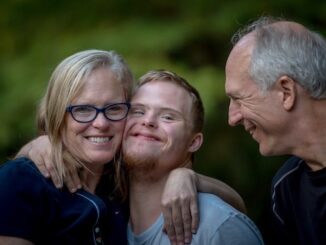Throughout the course of the past year amid the COVID pandemic, the response to the virus has changed drastically. From March 2020, to the Summertime, to the peak of the third wave and until now, medical methods and protocols have had to adapt as the virus has evolved.

Dr. Joan Cheng, Chief of Emergency Department at St Joseph’s Health Centre, was able to offer her insights as to how the medical community has dealt with the virus, how the pandemic has changed medical care, and how it has impacted the medical community’s mental health.
In the beginning stages of the pandemic, the nature of the virus felt very novel and unfamiliar as there had been few instances in Toronto’s recent past of such a widespread infectious pandemic. Dr. Cheng noted that the unknown nature of the virus spurred on new discoveries everyday, and thus a great amount of creative problem solving as physicians and nurses were running into problems that no one had ever encountered before. For example, Dr. Cheng explained the need to “reinvent” resuscitation from cardiac arrest, as it needed to be performed with the bare number of health care providers in the room as well as without anyone leaving the room. Many hospitals utilized baby monitors to communicate to those outside the room, while others used white boards to hold up to the window.
The pandemic and the multiple stay at home orders that have ensued have also accelerated solutions which may have been lagging pre-pandemic due to the more complicated logistics that they required. Virtual care is the most widespread example of this, as the idea had been debated amongst the medical community for years prior. It was originally viewed as necessary only to serve a small sect of the population, specifically remote and northern communities who have trouble accessing healthcare. However, when virtual healthcare became a necessity for the vast majority of the population, push came to shove and virtual care was carried out in nearly all specialities of medicine.
One technological advancement that has drastically improved the COVID response as compared to the SARS response in 2003 has been social media. By having contact with medical professionals all over the world, the medical community has been able to leverage their collective wisdom across social media, resulting in amazing collaboration across different disciplines and professions in order to problem solve. “This really allowed us to take that knowledge from elsewhere so we could use that time and prepare”, Dr. Cheng noted, referring to situations in regions not far ahead of Toronto such as New York City or Italy. Due to the enhanced knowledge of these regions’ situations, Dr. Cheng was able to build learning modules to practice with her colleagues in order to streamline the process for such high intensity scenarios in the near future.
However, social media also had the potential to cause frustration and hopelessness. “Sometimes you were able to see things that were happening in a different country and realize that they were just a few weeks ahead of us. Some people were frustrated by the perceived lack of action when you knew exactly what was coming because you had good data”, Dr. Cheng stated.

One of the greatest impacts of this pandemic has been on the mental health of medical staff, however the impacts have changed throughout the timeline of the pandemic. In March 2020 there was a great deal of fear, much of which was invoked from the horrifying events occurring in places like New York City. NYC was only a few weeks ahead of Toronto in the pandemic, meaning that the unknown situations that they were facing felt very imminent to Toronto medical staff. Dr. Cheng explained the sense of urgency by saying that “none of us are prepared to die doing this work, and yet here was this very real possibility so it’s very, very frightening. My partner, who is also an ER physician, and I made sure our wills were ready to go, got the file and put it in our kitchen on a shelf so that our kids could find it easily. I know we were not alone.”
As the pandemic progressed and the medical community had gotten their bearings, the stress seemed to stem more from citizens not following protocols, such as not wearing masks and doubting the efficacy of vaccines. This type of stress as well as the long hours have led to burnout in several areas in the medical field, specifically among physicians and nurses. Since the pandemic there have been higher rates of physician retirement as well as an extraordinary ER nurse staffing shortage. “I worry about their ability to keep coming back tomorrow, next week, next month, next year”, Dr. Cheng sympathized.
After seeing the ineffective nature of many Emergency Rooms in response to this pandemic, Dr. Cheng was a leading force in constructing Canada’s first ever COVID suited emergency room at St. Joseph’s Health Centre. The design of the ER was meant to keep in mind features that would be necessary both for this pandemic as well as for future pandemics. “We’d be foolish to assume that we’re not going to have another one, and the next one could be far worse and far more infectious”, Dr. Cheng said. These features will include individual patient rooms with walls which can be wiped down with disinfectant (which is far more practical than washing divider curtains), as well as HVAC ports to create negative pressure which will suck the air out of each room and filter it before it is ventilated out again which helps to prevent the spread of infectious diseases. While these measures are going to be beneficial for COVID and other pandemics in the long run, in general they will improve patient experience by providing privacy and serenity.




